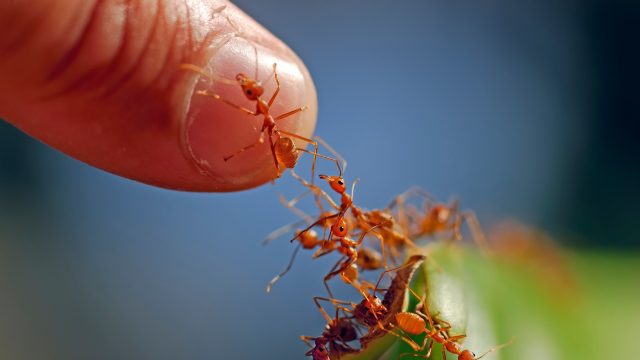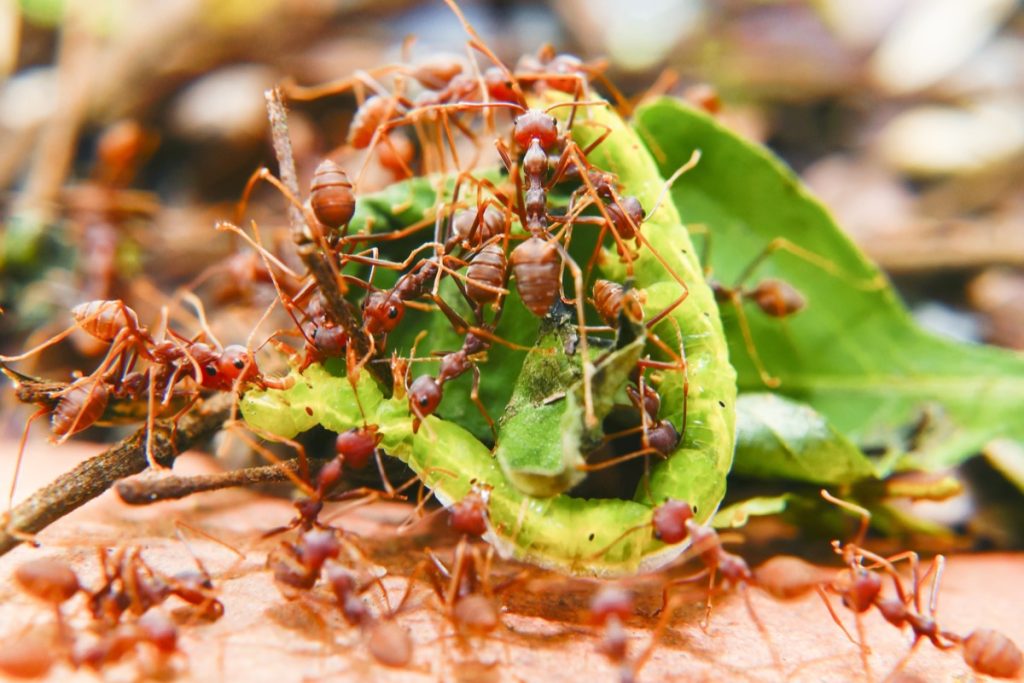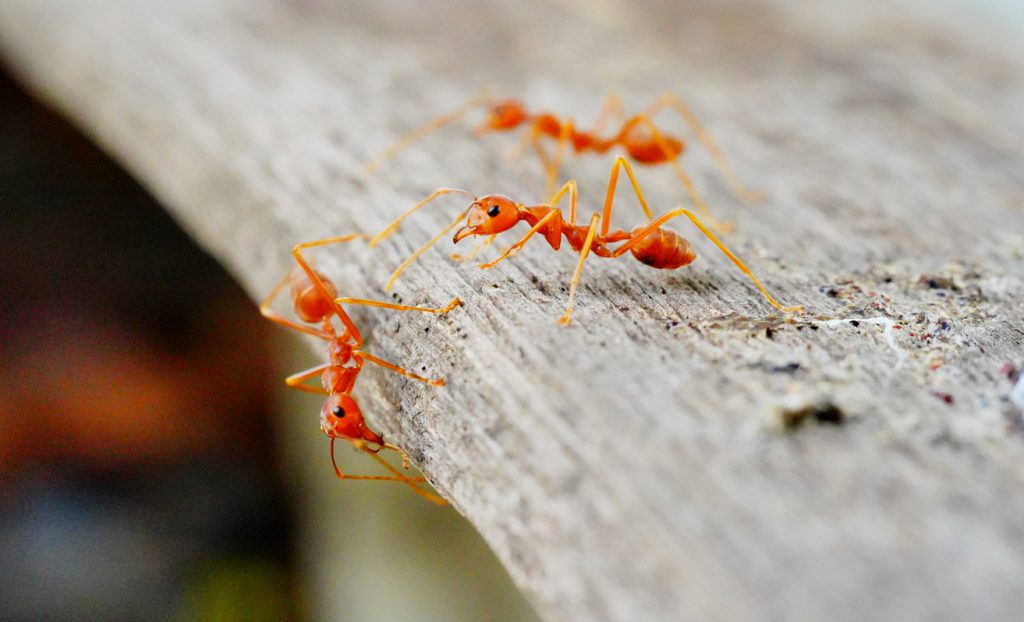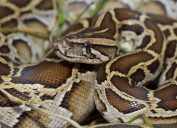If You Live Here, Watch Out for Fire Ants "Stinging People While They Sleep," Authorities Say
The invasive species with a painful bite is "raining down" on residents.

Dealing with biting or stinging bugs is one thing when you're out in nature, but the problem becomes an entirely different ordeal when they begin to make their way into your home. Some have to worry about run-ins with brown recluse spiders when removing items from storage or cleaning lesser-used areas around the house. Others face the scourge of bed bugs that infiltrate furniture and mattresses. But for residents in one area, fire ants have become a serious issue, making their way into homes and "stinging people while they sleep." Read on to see who might be affected by this tiny insect that packs a painful bite.
READ THIS NEXT: The No. 1 Thing Attracting Mosquitoes to Your Yard.
One type of fire ant has become a notorious invasive species in certain areas.

Typical black ants may be a nuisance when they make their way into your pantry or crash your picnic. Full-blown infestations can be especially difficult to deal with, as the number of tiny insects marching around can seem practically infinite. But one fire ant species has become notorious for its painful sting and ability to spread almost unchecked through new, non-native areas.
The Little Fire Ant (LFA) can be considered tiny both by name and physical size. Unlike slightly larger tropical fire ants, the small, pale orange insects are only one-sixteenth of an inch long—or about the thickness of a penny—and move at a much slower pace than their bigger counterpart, according to StopTheAnt.org. But despite its tiny stature, LFA packs an excruciating sting that can produce large, long-lasting welts in humans and even cause blindness in pets. The insects can be particularly pesky because they're not as good at clinging to surfaces as other ant species, meaning they often get bumped off of plants and trees to create "ant rain" on unsuspecting people and animals below.
But the LFA's real threat lies in the big picture. Even though the tiny insect is native to South America, it has begun to spread to new areas and is now considered one of the world's worst invasive species, according to the International Union for Conservation of Nature (IUCN). And without natural predators in the areas they conquer, their population size can swell "to the point where people and animals can't avoid stings," according to StopTheAnt. And now, residents in one place are dealing with the tiny terrors even in their own homes.
Authorities in one area report that Little Fire Ants are stinging people while they sleep.

Hawaii is a beloved destination for its stunning natural beauty, lush vegetation, and unique wildlife. But now, authorities in the Aloha State are warning residents to be on the lookout for the small fire ants as the invasive insects are booming there in higher numbers than ever before, SFGate reports.
Even though LFA were first reported there 23 years ago, officials say that the invasive insects are becoming a serious issue across the state's islands. They warn that if left unchecked, the bugs will significantly impact the state's agriculture and tourism industries—not to mention create headaches for locals.
"They're changing the way of life for our residents here in Hawaii," Heather Forester, a representative from Hawaii Ant Lab, told SFGate. "You used to be able to go out hiking and go to the beach. They can rain down on people and sting them. The stings are different for different people. In heavily infested areas, the ants can actually move into people's homes. We have a lot of reports of them stinging people while they sleep in their beds."
RELATED: For more up-to-date information, sign up for our daily newsletter.
One local infestation has the potential to blow up into a permanent problem.

While LFA are already spread throughout the island chain, officials are currently most concerned about Kauai due to the recent discovery of a booming invasion colony there. After they were first spotted on private property, the fire ants then spread to a cliffside of a valley near Wailua River, Haylin Chock, a representative for the Kauai Invasive Species Committee, told SFGATE. However, she said the "really concerning part" is that they could eventually make their way to the flowing water and spread the colony through nearby Wailua River State Park.
"That would infest the entire state park," Chock told SFGate. "If they are at that point, they can start climbing trees. It's like a paradise for them. If that happens, how are we supposed to know where they are?"
Officials have asked residents to send in ant samples and report the invasive pests.

The potential continued spread of the invasive pests has spurred local officials to action. Last month, the state's Department of Land and Natural Resources (DLNR) declared October "Stop the Ant Month," urging residents to collect samples of the bugs and send them in for identification.
"Hawai'i has no native ants and has prioritized the detection of new, harmful ant species, and the management of particularly harmful ant species including LFA," the agency wrote in a press release. "Several treatments are available, and populations of ants can be managed or even completely removed from homes if caught early enough."
The agency also urges locals to keep an eye on their lawns for LFA, making sure to inspect any gardening materials such as plants, mulch, and soil before distributing them.





















